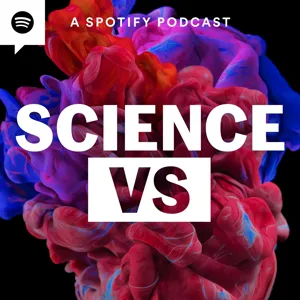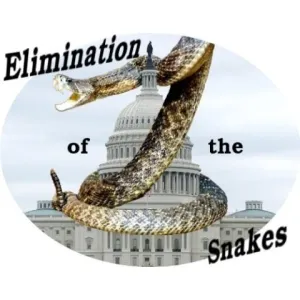Podcast Summary
Personal victories through savings and inspiration: State Farm's personal price plan saves through bundling and rating plans, while Kroger offers everyday low prices and additional savings with digital coupons and fuel points.
State Farm's personal price plan and shopping at Kroger can bring personal victories through savings and inspiration, respectively. State Farm's plan allows customers to bundle and save based on rating plans that vary by state, while Kroger offers over 30,000 choices at everyday low prices, plus additional savings through digital coupons and fuel points. However, it's important to note that availability, discounts, and savings vary by state for State Farm. In the realm of science, the coronavirus's potential to spread through the air has raised concerns, and it's not as simple as avoiding droplets from coughs or sneezes. The idea of airborne diseases can evoke images of toxic clouds traveling from place to place, but it's crucial to understand the science behind it. Experts are still studying the coronavirus's transmission methods, and the idea that it could be airborne adds a new layer of complexity to our understanding of this virus. To learn more about various scientific fields, check out the podcast "Ologies" for fascinating stories on various "ologies."
History of airborne virus transmission: Airborne transmission of viruses involves tiny particles carrying infectious agents that can travel over long distances, contrasting the initial belief in large droplet transmission from coughs and sneezes.
The debate over whether viruses, including COVID-19, are airborne or not is not new. It dates back to the early 1900s when scientists were trying to understand how diseases were transmitted. Initially, they believed large droplets from coughs and sneezes were responsible. However, they later discovered that some diseases, like tuberculosis, could spread through the air even when people were not in close contact. This led to the concept of airborne transmission, where tiny particles containing viruses or bacteria can remain infectious in the air and be carried over long distances. Understanding this history helps us appreciate the complexity of virus transmission and the importance of implementing appropriate infection control measures.
The distinction between airborne and droplet diseases is evolving: New research shows that some diseases previously classified as droplet may actually transmit through the air, challenging traditional understanding and requiring updated prevention measures.
The distinction between airborne and droplet diseases is becoming less clear-cut due to advancements in technology and research. For instance, the flu, which was previously considered a droplet disease, can produce viral particles that can remain suspended in the air and potentially infect people in the same room. This discovery, among others, challenges the traditional understanding of these disease categories. Furthermore, some viruses, like smallpox and measles, seem to spread more effectively through the air than others. As for the coronavirus, it was initially thought to be primarily spread through droplets. However, recent findings suggest that it may also transmit through the air, especially in enclosed spaces. These developments underscore the importance of considering both modes of transmission when dealing with respiratory diseases. The science community is recognizing that the airborne/droplet distinction may not be as meaningful as once thought, and researchers are working to better understand the complexities of viral transmission.
Discovering Airborne Transmission of Coronavirus in Hospitals and Bathrooms: Coronavirus can spread through the air, particularly in poorly ventilated areas like hospitals and bathrooms. Close the toilet lid to prevent the spread of viral particles.
A study conducted by doctor Ning and his colleagues in Wuhan discovered that the coronavirus can spread through the air, particularly in poorly ventilated areas like hospitals and bathrooms. They used a machine to suck air through a filter and test for genetic material of the virus. Although they couldn't be sure if any of the virus was still alive, they found viral particles in some hospital rooms, including bathrooms with makeshift toilets. The most likely explanation is that the particles came from the breath of coronavirus patients or were aerosolized from their feces during toilet use. The researchers advised closing the toilet lid to prevent the spread of viral particles.
Airborne transmission of coronavirus in enclosed spaces and poorly ventilated areas: Coronavirus can spread through the air, especially in enclosed spaces and poorly ventilated areas, even if people test negative. Well-ventilated spaces are less likely to have airborne viral particles.
The coronavirus can be found in the air, particularly in enclosed spaces like hospital rooms where protective gear is removed. This is concerning because even if the people in these spaces have tested negative for the virus, they could still be spreading it through the air when they take off their gear. Additionally, a department store entrance was found to have viral particles, potentially infecting people as they walk through. However, not everywhere has been found to have the virus in the air, and studies suggest that well-ventilated areas are less likely to have airborne viral particles. It's important to be cautious in poorly ventilated spaces and areas with high foot traffic. The exact number of viral particles needed to make someone sick is still unknown, but it's possible that not enough particles would be breathed in to cause infection if they land on skin or clothing instead of being inhaled directly. Overall, more research is needed to fully understand the role of airborne transmission in the spread of the coronavirus.
Study finds no detection of COVID-19 virus in air when patients spoke and breathed near air sampler: While airborne transmission of COVID-19 is a concern, classic transmission methods like coughing and sneezing and contaminated surfaces remain a greater threat. Research continues on how the virus spreads.
While the risk of contracting the virus through airborne particles is a concern, it's important to remember that classic transmission methods like coughing and sneezing still pose a greater threat. Additionally, contaminated surfaces may also contribute to the spread of the virus. The recent study that found no detection of the virus in the air when patients breathed and spoke near an air sampler is not a reason to panic, but rather a reminder to be more cautious. The virus could potentially be present everywhere, raising questions about how to protect oneself from contaminated packages, groceries, and other surfaces. Researchers are still studying the various ways the virus spreads, and more information on this topic will be discussed in an upcoming episode. In other news, male bottlenose dolphins near Western Australia have been found to sing together in harmony when trying to attract a female, adding to the fascinating behaviors of these animals. This week's episode of Science Versus includes 76 citations, which can be found in the transcript or on the website. The episode was produced by a team of dedicated individuals and features interviews with various researchers.






